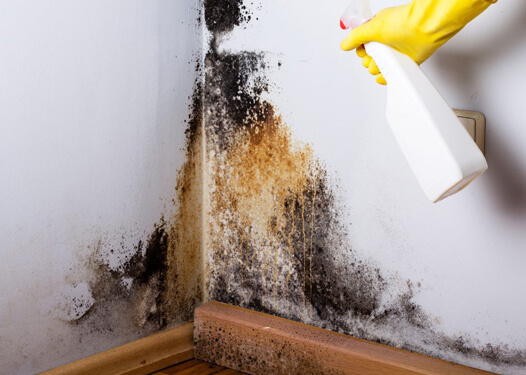
The Ultimate Guide to Water Removal and Extraction: Protect Your Home
When water damage happens, timely action can be the difference between an easy cleanup and a costly disaster. Water removal and extraction are critical steps in minimizing damage, repairing your house, and creating a safe living environment. In this article, we’ll walk you through every step of the water removal and extraction process, so you can confidently manage this difficult scenario. Professional services like plumbing maintenance ensure thorough water damage restoration for your property.
Understanding the Importance of Water Removal
Water damage does not only cause undesirable stains or wet carpets; it also poses serious threats to your home and health. Acting quickly allows you to:
- Prevent Mold Growth: Mold can form within 24 hours of water exposure, jeopardizing your air quality.
- Prevent Structural Damage: Prolonged moisture exposure deteriorates walls, floors, and foundations.
Preserve Belongings: Furniture, electronics, and personal goods are frequently salvageable if water is evacuated quickly.
Cut costs: Faster response leads to fewer repairs and a reduced overall restoration bill.
The water removal and extraction process is the cornerstone of mitigating these risks.
Step-by-Step Guide to Water Removal and Extraction
1. Assessing the Damage
Before beginning cleanup, professionals undertake a thorough assessment. This includes detecting the water source, determining the type of water (clean, gray, or black), and utilizing modern instruments such as moisture meters to locate hidden wet spots.
2. Effective Water Extraction Methods
Water extraction is a multi-step process tailored to the severity of the damage. Common techniques include:
- High-Powered Pumps: Ideal for flooding situations, these pumps quickly remove large volumes of water.
- Wet Vacuums: Suitable for smaller water accumulations, they’re effective on hard surfaces.
- Absorbent Materials: Sponges and absorbent pads can address minor spills or areas with residual moisture.
These tools and techniques work together to remove standing water swiftly and thoroughly.
3. Drying and Dehumidification
Once the visible water is gone, the drying process begins. Industrial-grade fans and dehumidifiers target remaining moisture in walls, floors, and the air. This step prevents secondary damage like mold growth or warped materials.
4. Cleaning and Sanitizing
Floodwaters often carry harmful bacteria, debris, and contaminants. Sanitization involves disinfecting affected areas using antimicrobial treatments to eliminate health risks and odors.
5. Restoration and Repairs
After water removal and drying, repairs may be necessary to restore your home. This could involve replacing drywall, refinishing floors, or repainting walls to restore their appearance and structural integrity.
Signs You Need Professional Water Removal Services
Sometimes, water damage may not be immediately apparent. Here are warning signs that professional water removal and extraction are needed:
- Persistent damp or musty smells
- Discoloration or bubbling in walls and ceilings
- Warped or swollen floors
- Increased allergy symptoms or respiratory issues
- Unexplained water stains
Professionals have the tools and expertise to address these issues effectively, preventing long-term damage. Timely intervention with property repair can prevent costly repairs and mold growth.
How to Prevent Water Damage
Avoiding future water damage is possible with proactive measures:
- Maintain Your Plumbing: Regularly check for leaks in pipes, faucets, and water heaters.
- Clear Gutters and Drains: Ensure water flows away from your home during storms.
- Install a Sump Pump: This device prevents basement flooding by redirecting excess water.
- Use Smart Sensors: These devices alert you to leaks or moisture buildup early.
With these strategies, you can minimize the risk of needing emergency water removal services.
FAQs About Water Removal and Extraction
What’s the Difference Between Water Removal and Extraction?
Water removal refers to the overall process of eliminating water from your property, while water extraction specifically focuses on removing standing water using specialized equipment. Both steps are critical to effective restoration. When water damage strikes, dehumidification tips offers the expertise you need for recovery.
How Long Does the Water Extraction Process Take?
The time required depends on the severity of the damage. Minor incidents might take a few hours, while extensive flooding could require several days of extraction and drying.
Can I Handle Water Extraction Myself?
While small spills can be managed independently, professional assistance is recommended for larger issues to ensure no moisture is left behind. DIY efforts often miss hidden water pockets, leading to future problems.
How Much Does Water Removal Cost?
Costs vary based on factors like the extent of damage, water type, and required repairs. Consulting a professional can provide a more accurate estimate.
Key Benefits of Hiring Professionals
Professional water removal services offer:
- Advanced Equipment: High-powered pumps, infrared cameras, and industrial dehumidifiers achieve results that DIY methods cannot.
- Thorough Inspections: Experts ensure no hidden water is left behind.
- Faster Restoration: Their experience and tools streamline the entire process, minimizing disruption.
- Long-Term Peace of Mind: Professionals address underlying issues to prevent recurring problems.
Why Choose Professionals for Water Removal and Extraction?
Your home is your sanctuary, and protecting it after water damage is a top priority. Professionals ensure the job is done thoroughly and efficiently, sparing you from long-term risks and expenses.
